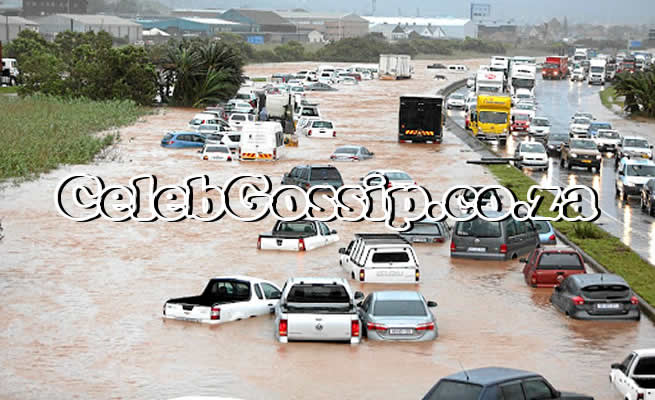South Africa is battening down the hatches as the South African Weather Service (SAWS) has issued stark warnings of severe thunderstorms, flooding, and potential power outages across multiple provinces. The warnings, issued at yellow level 2 and the more serious yellow level 4, paint a picture of potentially disruptive weather impacting much of the country.
The SAWS has specifically highlighted the threat in several key regions. “Yellow level 2 warning for disruptive Rain resulting in localised flooding of susceptible roads and bridges, settlements and low-lying areas due to heavy downpours, is expected over the extreme northern parts of Gauteng, northern and eastern parts of Mpumalanga, as well as the southern, western and central parts of Limpopo,” the service warned. This less severe warning still carries the potential for significant disruption to daily life.
However, a far more serious threat looms over other parts of the country. SAWS issued a yellow level 4 warning, indicating a higher likelihood of substantial impact. “Severe thunderstorms resulting in flooding of roads, settlements and low-lying areas leading in closure of some bridges and roads due to heavy downpours, in damage to property and infrastructure due to strong winds and hail, and disruption of municipal services due to excessive lightning, are expected over the central parts of both North West and Free State Provinces.” This warning underscores the need for heightened preparedness and caution.
The impending storms are expected to bring intense rainfall, leading to localised flooding, particularly in low-lying areas. Roads, bridges, and settlements are all at risk of being inundated, causing significant disruption to transport and daily routines. The potential for damage to property and infrastructure from strong winds and hail adds another layer of concern. Power outages are also a real possibility due to the excessive lightning anticipated.
Tshwane Emergency Services spokesperson, Lindsay Mnguni, has urged communities to remain vigilant and take necessary precautions. “If possible, stay indoors and away from metal objects. Do not seek shelter under trees or tall objects and avoid crossing flooded low-lying roads, bridges and swollen streams. Be aware that any combination of hail, strong winds, heavy rain and/or excessive lightning can accompany storms,” Mnguni warned, offering crucial advice for staying safe during the severe weather.
Motorists are advised to exercise extreme caution. The adverse weather conditions are likely to cause heavy traffic congestion, so drivers are urged to maintain a safe following distance and keep their headlights on to increase visibility. Mnguni also stressed the importance of monitoring weather warnings and alerts from credible sources and following all safety recommendations.
Beyond immediate safety concerns, homeowners are urged to take steps to protect their properties. Karen Rimmer, Head of Distribution at PSG Insure, highlighted the importance of proactive outdoor maintenance. With drought conditions affecting some areas, she advised checking sprinkler systems for leaks to prevent water waste and potential damage during the storms. Outdoor furniture and structures should be secured to prevent them from becoming hazards in strong winds.
Rimmer also emphasised the importance of good neighbourly relations, suggesting that homeowners communicate with neighbours about potential property issues, particularly those related to water drainage or leaks. Such cooperation can help prevent disputes and simplify insurance claims should problems arise. She also warned about fire hazards, advising that dead plants and branches be trimmed back to minimise the risk of fire from lightning strikes or strong winds.
With summer approaching, stronger winds are anticipated, potentially exacerbating storm damage. Rimmer stressed the need for pre-emptive action, urging homeowners to reinforce loose structures, awnings, or neglected sheds. Furthermore, she advised updating insurance policies to reflect the current replacement value of properties, including any unique or high-value features. Regular policy reviews ensure adequate coverage for repairs or replacements after a storm. She also recommended creating a checklist for routine maintenance tasks, including regular checks on geysers, garden taps, and other essential systems.










